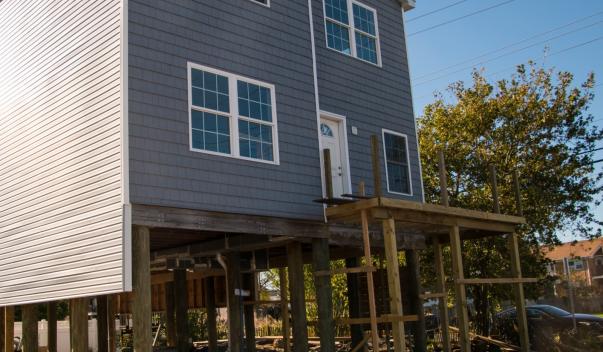What you need to know about buying flood insurance

Flood insurance coverage and rates
-
Most homeowners and renters insurance does not cover flood damage.
-
The National Flood Insurance Program (NFIP) has coverage options to protect your home, belongings or business from floods.
-
Policy rates are unique to your location and needs and they don't vary by insurance provider.
What does flood insurance cover?
Your NFIP flood insurance policy covers direct physical flood damage to your home and your belongings.
Building coverage
Home and business coverage is called building coverage:
- Electrical and plumbing systems.
- Furnaces and water heaters.
- Refrigerators, stoves and built-in appliances like dishwashers.
- Permanently installed carpeting.
- Permanently installed cabinets, paneling and bookcases.
- Window blinds.
- Foundation walls, anchorage systems and staircases.
- Detached garages.
- Fuel tanks, well water tanks and pumps and solar energy equipment.
Contents coverage
Belongings coverage is called contents coverage. It protects things like your:
- Clothing, furniture and electronic equipment.
- Curtains.
- Washer and dryer.
- Portable and window air conditioners.
- Microwave.
- Carpet installed over wood floors.
- Valuable items such as original artwork and furs (up to $2,500)
- Merchandise and raw materials held in storage or for sale, if you’re a business owner.
Building and contents coverage are typically purchased separately and have separate deductibles.
NFIP flood insurance policy rates
Three things determine your flood insurance rate: where your property is built, how it’s built and what it would cost to replace it.
Your premium is completely unique to your home. That means if you live in a community with low flood risk, you'll pay less than someone who lives in a high-risk area.
The NFIP partners with more than 48 insurance companies and thousands of independent agents. They all use our pricing approach, so you don't have to shop around. Each one offers the same rates.
Tips for buying flood insurance
-
Follow the homeowners policy checklist
Image
There are a number of actions you can take to reduce flood damage — and your flood insurance premium.
-
Estimate your available discounts
Image
You can modify your property to lower your flood insurance premium.
-
Get a custom flood insurance quote
Image
You can get a personalized estimate of your flood insurance costs from the NFIP online.
FAQs
Most homeowners and renters insurance do not cover flood damage. Only a flood insurance policy will help you recover after a flood.
The cause of flooding matters when determining coverage. For example, your policy would cover water damage to your home from a sewer that backed up during a heavy rainstorm. It would not cover damage from a sewer backup caused by clogged pipes.
There are a handful of items and expenses your policy doesn't protect, no matter the cause of flooding. They include:
- Currency, precious metals, stock certificates and other valuable papers
- Cars and most self-propelled vehicles, including their parts
- Personal property kept in basements
- Property outside of an insured building, such as landscaping, septic systems, decks and patios, fences and swimming pools
- Temporary housing and additional living expenses during your home's repair
- Financial losses caused by business interruption
Your NFIP flood insurance policy lasts for one year.
Your coverage will be good for 30 days after it expires. Claims will be honored during this grace period as long as you renew and pay the premium in full by the end of the period.
Your flood insurance coverage will go into effect 30 days after your date of purchase. There are four exceptions to this rule:
- There is no wait if you buy flood insurance while making, increasing, extending or renewing a mortgage.
- There is no wait if you change your flood insurance coverage while renewing your policy.
- There is a one-day wait if your property is in a newly-designated high-risk flood zone and you buy a policy within 12 months of the update.
- There is a one-day waiting period if a flood is caused or worsened by a wildfire on federal land and you buy a policy within 60 days of the wildfire containment date.
Yes! There are ways you can reduce your risk — and cost as a result. For example, you may find savings if you elevate your water heater or electrical panel, so they are less likely to be damaged in a flood. Getting an elevation certificate, which documents your building's elevation, can also lower the price.
